Mastering the Vintage Pokémon Card Market: A Guide
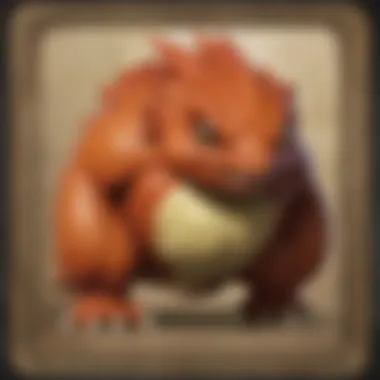
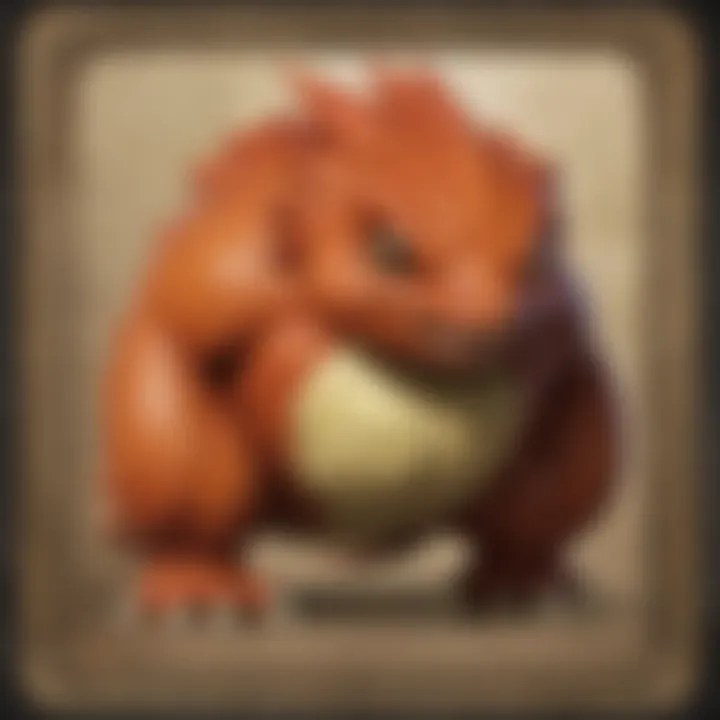
Intro
When one thinks of nostalgia, the vibrant world of Pokémon often springs to mind—a realm that has ignited the imaginations of generations. But beyond the digital landscapes and animated series lies another layer of this universe: vintage Pokémon cards. Collecting these cards isn’t merely a pastime; it’s an intricate dance of history, art, and commerce.
But why is the allure of vintage Pokémon cards so potent? For many, it connects to cherished childhood memories spent trading cards on the playground. For others, it represents a lucrative investment potential.
This guide serves as a roadmap for enthusiasts and newcomers alike, navigating the multifaceted journey of acquiring vintage Pokémon cards. You’ll find insights into their historical significance, practical tips on where to obtain them, methods for authentication, and the nuances of market trends.
As we embark on this exploration, it’s important to recognize that collecting goes beyond mere acquisition; it’s about appreciating the stories these cards tell, their evolution over time, and the community that surrounds them. Let’s dive deeper into this fascinating realm.
Pokemon Game Overview
History of Pokémon Games
The Pokémon franchise was launched in 1996, showcasing a new gameplay concept that combined adventure with collection mechanics. Initially, it revolved around simple mechanics in Pokémon Red and Green, which led players through a journey to catch and train creatures known as Pokémon. Over the years, the franchise has expanded into various game versions, each bringing new features and a broader narrative arc.
Evolution of Gameplay Mechanics
With each iteration, Pokémon games have introduced innovative gameplay mechanics that have kept them fresh. The transition from 2D graphics in early games to stunning 3D environments in more recent titles captivates both the nostalgia of seasoned vets and the enthusiasm of new players. Mechanics like double battles, Mega Evolutions, and Dynamaxing have added layers of strategy to the game, enhancing player experiences.
Foreword to Different Game Versions
The evolution of the Pokémon franchise is mirrored in its diverse game versions. Here are a few key releases:
- Pokémon Red and Blue: These originals laid the groundwork for a beloved franchise.
- Pokémon Gold and Silver: The introduction of breeding and a second region to explore marked a new era.
- Pokémon Ruby and Sapphire: Began the trend of introducing Pokémon abilities that could change battle dynamics.
- Pokémon Sword and Shield: Brought new Pokémon, regions, and combat mechanics, further attracting a modern audience.
Collecting vintage Pokémon cards mirrors collecting the history of the games—every card a snapshot of a moment in time.
While this guide mainly focuses on the cards, it is crucial to acknowledge how these games have shaped Pokémon culture, significantly boosting the demand and value of vintage cards. Understanding the game's history is the first step in appreciating the significance of the cards that emerged from it.
Why Collect Vintage Pokémon Cards?
In the throes of the digital age, physical objects like vintage Pokémon cards can seem out of place; however, they hold a value that transcends mere currency. Here are several reasons why collectors delve into this world:
- Nostalgia: For many, it's about reliving childhood memories associated with gameplay.
- Investment Potential: Rare cards can appreciate significantly, providing financial returns.
- Community and Connection: Collecting fosters a sense of belonging and creates connections among enthusiasts.
As we proceed, you’ll find that the vintage Pokémon card market is more than just transactions; it’s a complex ecosystem filled with its own trends, challenges, and delights.
Understanding the Appeal of Old Pokémon Cards
The allure of vintage Pokémon cards is a fascinating phenomenon that transcends mere nostalgia. It taps into a vibrant tapestry of culture, history, and personal connection. For many collectors, acquiring these cards means holding onto a slice of their youth, evoking memories of intense battles, friendly trades, and the joy of discovery from the earliest days of Pokémon. This section will explore what makes these collectibles so special and why they continue to draw in fans from all walks of life, from long-time enthusiasts to new collectors.
Historical Context of Pokémon Cards
To appreciate the value of old Pokémon cards, it's crucial to step back in time. When Pokémon burst onto the scene in the late 90s, it captivated a generation, not just through video games and television, but through card collecting. The original set released in 1999 set the stage for what would become a cultural juggernaut. Each card represented not only a character but also a moment in a broader narrative of joy and excitement that spanned continents.
The market witnessed an explosion shortly after the initial release, with cards such as Charizard becoming iconic symbols of the Pokémon phenomenon. Back then, it wasn't just about having the rare cards; it was about sharing experiences, trading with friends, and participating in competitions. Each card held stories and connections, making them treasured items far beyond their monetary value. The evolution continued over the years, with special editions, promotional cards, and various series, each reflecting shifts in the Pokémon landscape and collector interests.
Current Trends in Collecting
Fast forward to today, and the vintage Pokémon card market is thriving, influenced by various trends. Collectors are not just looking at rarity; they are also captivated by the nostalgia these cards evoke. Online platforms and local gatherings have created vibrant communities where enthusiasts exchange knowledge, trade cards, and share their passion.
Some current trends include:
- Rethinking Value: Collectors are increasingly focusing on emotional value rather than just the dollar sign. Cards that remind someone of childhood victories or losses are highly sought after.
- Investor Mindset: With some cards selling for astronomical prices at auctions, more people enter the market to invest. This speculative purchasing adds another layer of complexity to the collecting scene.
- Diversified Interests: Increasingly, collectors are branching out from the standard ‘first edition’ staples. This includes holographic cards, complete sets, and unique promotional items that capture the imagination.
Moreover, social media platforms and forums like Reddit serve as hubs for collectors, providing a space for sharing, selling, and fostering connections. The sense of community, while deeply rooted in shared passion, has evolved into a dynamic landscape where trends shift quickly and heavily influence the market.
This vibrant appeal of vintage Pokémon cards is a blend of history, community, and personal significance. It's like each card opened holds a piece of the past, inviting collectors to reflect and reconnect with the moments that made the journey worthwhile.
Types of Old Pokémon Cards
Diving into the world of Pokémon card collecting isn’t just about grabbing cards from the past; it involves understanding the variety that exists in vintage cards. Knowing the different types helps collectors make informed buying decisions, and it also deepens the appreciation for each card’s significance and artistry. The journey through the realm of vintage Pokémon cards can be quite rewarding, both emotionally and financially.
First Edition vs. Unlimited
The distinction between First Edition and Unlimited cards represents a key element of collecting. First Edition cards were the original print run of the Pokémon trading card game, and as such, they hold a prestigious position in a collector’s portfolio. This is because their limited availability makes them considerably more sought after. For many collectors, owning a First Edition card is akin to having a piece of history in hand.
On the other hand, Unlimited cards were printed in larger quantities following the initial release. While they are still appreciated, they don’t carry the same weight as their First Edition counterparts. Collectors often find themselves drawn to having both versions—this duality strengthens the story behind their collection and adds layers of context.
Rare and Holographic Cards
Rare and holographic cards are the true gems in the eyes of many collectors. A holographic card features a unique shiny surface that often makes it stand out in a collection. Just imagine pulling a holographic Charizard from a pack! The sheer excitement goes beyond the monetary value; it’s about nostalgia and the thrill of the hunt.
Certain cards fit within the "rare" category, which can include specific promotional cards or those with limited print runs. The rarity can dramatically affect its value. A mint condition rare card can fetch thousands, while a worn-out version may not hold much value at all. Thus, understanding how to identify these cards and knowing their significance in the wider Pokémon card community is critical.
"A collector's joy often lies in the chase. Finding that elusive rare or holographic card is what drives many to keep searching."
Promotional and Special Editions
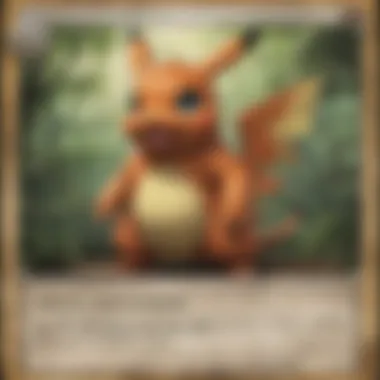
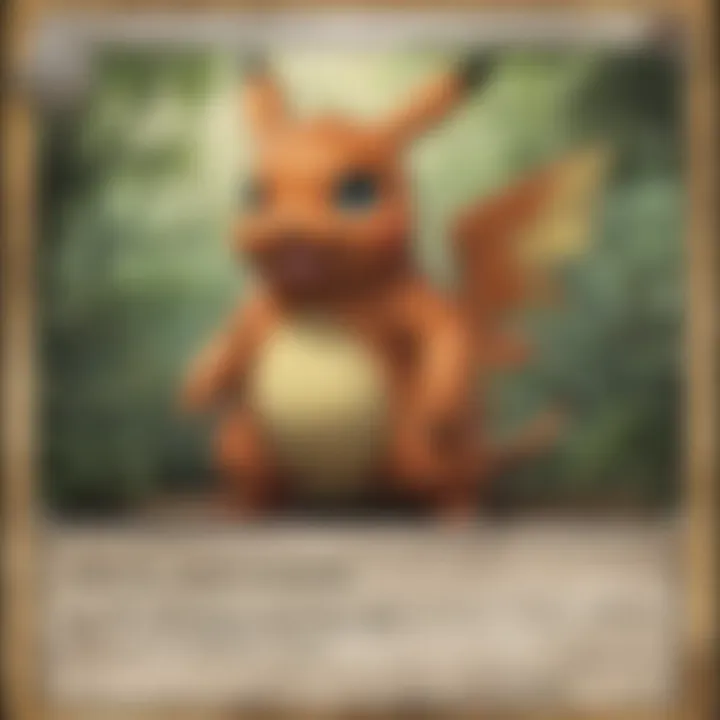
Promotional cards and special editions are a different breed altogether. These cards were typically produced for marketing campaigns, events, or special occasions. They aren’t a part of the main set and can often feature unique artwork or features that aren’t found in regular releases.
For instance, cards released during major tournaments or as part of a collaboration with a partner brand hold a distinct charm. Their limited nature and unique backstories can often make them just as, if not more, valuable than traditional rare cards. Emerging collectors need to keep their eyes peeled for these unique offerings, as they often encapsulate the spirit of the Pokémon brand in special ways.
Understanding these types of cards enables collectors to navigate through their journey with a clearer focus, enriching their experience and investment in the hobby.
Where to Buy Old Pokémon Cards
Finding the right sources to purchase vintage Pokémon cards can feel like searching for a needle in a haystack, especially amid a sea of sellers and marketplaces. Knowing where to look not only saves time but can also lead to better deals. This section delves into two primary avenues for finding these cherished cards: online marketplaces and local options. Each has its unique advantages and challenges, and understanding them is key for collectors keen on increasing their collections.
Online Marketplaces Overview
In today’s digital age, online platforms have become hotspots for buying old Pokémon cards. They offer a wide selection and allow collectors to compare prices easily.
eBay
eBay is arguably the most well-known marketplace for vintage Pokémon cards. Its vast array of listings offers everything from common cards to rare finds. The main draw here is the auction format, which often results in competitive prices.
The unique feature of eBay is its bidding system, enabling buyers to set their own limits. However, this can be a double-edged sword. For instance, it can be thrilling to win a card at a low bid, but you might also end up in bidding wars that can inflate the card's final price beyond expected.
Benefits:
- Wide variety of listings, often updated daily.
- The ability to connect directly with sellers for negotiation.
- User feedback and seller ratings provide a sense of security.
Disadvantages:
- Risk of overpaying in competitive bids.
- The necessity of careful scrutiny of seller credibility.
Auction Sites
Auction sites, while similar to eBay, often cater specifically to collectible items. These can be more niche, featuring cards that are harder to find elsewhere. The excitement of live auctions often draws passionate collectors, making it a thrilling experience.
A key characteristic of auction sites is their specialized focus. Many have dedicated teams that authenticate the cards being sold, offering a layer of assurance. However, they can sometimes have higher buyer premiums compared to general marketplaces.
Benefits:
- Focused primarily on collectibles, ensuring serious sellers.
- Often provide expert authentication to validate card condition.
Disadvantages:
- Higher fees associated with bidding.
- Limited selection compared to broader marketplaces.
Specialty Websites
Specialty websites often target niche markets like vintage Pokémon cards. Websites like Troll and Toad or Cardmarket provide a platform specifically for trading and buying collectible cards. The advantage here is the community of like-minded individuals, often leading to lower prices compared to broader platforms.
These sites usually offer a streamlined process for transactions, from card selection to payment. However, being specialized means they can lack the extensive inventory seen on broader platforms. It’s thus advisable to make multiple checks across different sites before making a decision.
Benefits:
- Community-driven with established reputation among collectors.
- Often lower transaction fees.
Disadvantages:
- Smaller inventory compared to larger sites.
- Potential for less frequent updates or fewer available cards.
Local Options for Acquisition
While online shopping provides convenience, local options remain invaluable for collectors. They offer the tactile experience of handling cards and the opportunity to directly engage with sellers.
Local Card Shops
Local card shops offer a haven for vintage Pokémon card collectors. Not only can you physically inspect the cards before purchasing, but many shop owners are knowledgeable and can provide invaluable insights into card values. Some shops even host trading events, fostering a sense of community.
A key characteristic is the ability to build relationships with local sellers, often leading to insider access to new arrivals. However, the inventory might vary, and prices can be higher than online competitors.
Benefits:
- Direct inspection of card condition prior to purchase.
- Opportunities for networking and forming relationships with other collectors.
Disadvantages:
- Limited selection compared to online marketplaces.
- Higher prices due to overhead costs.
Flea Markets and Conventions
Flea markets and conventions are treasures for collectors looking for that hidden gem. The eclectic mix of vendors can surprise you with rare finds, all while creating an enjoyable atmosphere to hunt for cards. Flea markets often have more haggling, allowing collectors to negotiate prices effectively.
The unique feature of these venues is the sense of adventure involved. You never know what you might find at a local fair or a large convention. However, these events can be sporadic and may require travel to attend.
Benefits:

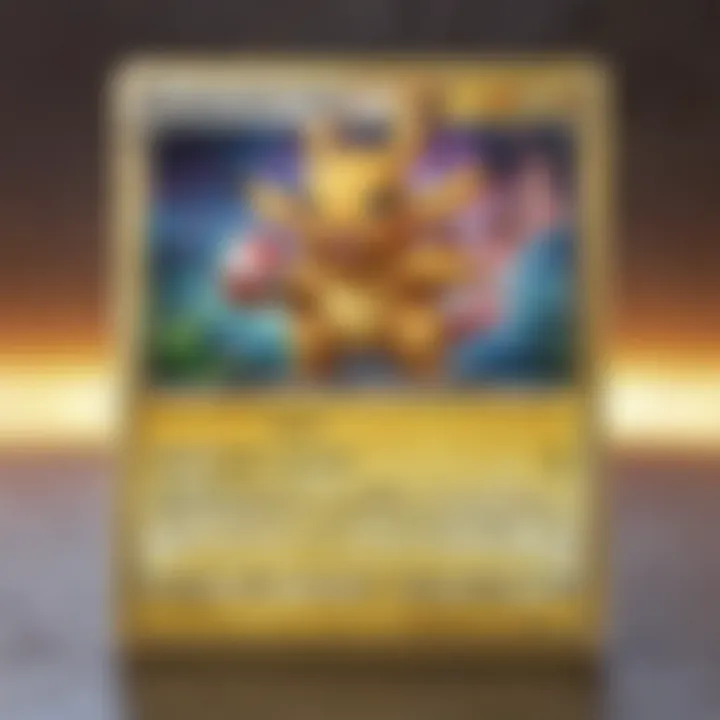
- Potential for lower prices through negotiation.
- Fun and community-oriented atmosphere.
Disadvantages:
- Less predictable availability of cards.
- Time-consuming to search through many vendors.
Evaluating the Condition of Cards
When it comes to acquiring vintage Pokémon cards, assessing their condition is not just a side note; it's a cornerstone of the whole process. The condition directly influences a card's value, appreciates its historical significance, and impacts the collector's experience. Knowing how to evaluate these cards means the difference between a wise investment and a hasty purchase.
Understanding Grading Systems
Grading is a systematic method used to assess the physical state of a card. It can seem a bit overwhelming, akin to learning a new language. However, it’s vital for collectors who want to ensure they’re getting their money’s worth. The grading scale commonly used ranges from 1 to 10, with 10 being "Gem Mint".
- Gem Mint (10): Perfect in every aspect—sharp corners, no scratches, and vibrant colors.
- Mint (9): Nearly perfect, may have very slight imperfections.
- Near Mint (8): Just below mint condition; might show some signs of wear.
- Excellent (7): Noticeable wear but still visually appealing.
- Good (6) and lower: Significant signs of wear and possible structural issues.
Professional grading services like PSA (Professional Sports Authenticator) and BGS (Beckett Grading Services) provide authoritative grades, which can assure buyers of authenticity and condition. Collectors value these third-party assessments for their expertise and accuracy, but it comes at a cost.
Factors Affecting Card Value
Several elements contribute to how much a particular card can sell for, with condition being one of the most critical. But it’s not the only consideration. Here are some crucial factors:
- Rarity: Some cards are rarer than others, instantly boosting their value, regardless of condition.
- Demand: If a card is highly sought-after, it can command a higher price, even if it’s not in mint condition.
- Historical Significance: Cards that hold memories or milestones in the Pokémon card lineage tend to draw collectors' interest and increase in value.
Additionally, collectors must consider the card's provenance—the history of its ownership—which can play a strong role in its desirability?
The condition of your cards can elevate or diminish your collection's worth significantly, making it essential to master this aspect.
In summary, evaluating the condition of Pokémon cards involves a mix of understanding grading systems and recognizing the multifaceted factors that influence their overall value. This diligence in examining what's in your hands can determine whether you’re holding a precious gem or just another piece of cardboard.
Authentication and Forgery Concerns
The world of vintage Pokémon cards is as thrilling as it is complex. As you navigate through this exciting realm, one crucial aspect stands out: authentication and forgery. With a market that has seen its fair share of fakes and reproductions, understanding how to distinguish the genuine from the counterfeit is paramount. Not only does this ensure that you invest wisely in your collection, but it also maintains the integrity of the Pokémon card community as a whole.
Recognizing Genuine Cards
Recognizing a genuine Pokémon card requires keen observation and a solid understanding of what authentic cards should look like. Here are some points to consider:
- Print Quality: Original Pokémon cards are printed with high precision. Look for the crispness in details, vibrant colors, and overall clarity. Counterfeits might have blurred edges or poor color saturation.
- Card Weight and Feel: An original card has a specific weight and thickness that you can feel. If a card feels too light or flimsy, it might be a fake.
- Holographic Shine: For holographic cards, check the pattern and shine. Authentic holographic cards have a distinctive shimmer that isn't replicated in counterfeits. Tilt the card under light to see if the holographic surface shifts appropriately.
- Registration Marks: On the bottom of the card, there are often registration marks visible upon close inspection. These dots should align perfectly with the card's design. If they appear off, you might be looking at a reproduction.
"In the world of collectibles, it's better to be safe than sorry. Take your time examining each card, cross-checking features against reputable references."
Professional Grading Services
Using professional grading services can add a layer of confidence when it comes to authentication. These services not only confirm the authenticity of a card, but they also grade its condition using standardized metrics. Here’s why you might consider professional grading:
- Third-Party Validation: Grading services like PSA (Professional Sports Authenticator) or Beckett provide unbiased reviews and ratings. This validation is particularly useful if you're buying a high-value card.
- Resale Value: Cards that are graded tend to fetch higher resale prices. Collectors are often willing to pay a premium for graded cards because they come with a guarantee of quality and authenticity.
- Preservation: Once graded, cards are encapsulated in protective holders that prevent damage, helping maintain their condition.
By engaging with these services, collectors can also obtain detailed records of the cards, making future transactions smoother.
In the world of acquiring vintage Pokémon cards, authentication is not just a nice-to-have; it's a necessity. The pointers and resources mentioned can serve as a compass, guiding you through potential pitfalls while ensuring your investment stands the test of time.
Market Trends and Valuation
Understanding the market trends and valuation for vintage Pokémon cards is crucial for collectors, investors, and even casual fans who find themselves drawn into this fascinating world. In recent years, there has been a noticeable surge in interest. The hype surrounding these collectibles is akin to the boom we saw in the ‘90s during Pokémon's initial rise. Knowing where the market is heading, and what influences pricing can make all the difference between a shrewd purchase and a less favorable transaction.
Understanding Market Fluctuations
Market fluctuations in vintage Pokémon cards are often swayed by a mélange of factors. One of the key determinants is supply and demand. For instance, if a popular card, say the Charizard from the base set, suddenly becomes the talk of the town, prices can skyrocket overnight. This ties into how collectors prioritize certain cards, leading them to scavenge for their holy grail, reminiscent of savvy hunters in search of hidden treasure.
- Seasonal Interest: Trends can ebb and flow seasonally, influenced by conventions, new game releases, or even social media buzz. When a new Pokémon game hits the shelves, interest in vintage cards can spike as nostalgic feelings resurface.
- Grading Impacts: A graded card by a reputable service can sometimes feel like holding a pot of gold. The condition grading impacts desirability and price significantly; for some, owning a PSA 10 variant can be a badge of honor, affecting market dynamics.
In summation, staying attuned to the pulse of the market and aware of these fluctuations can equip collectors with an upper hand in their pursuit.
Factors Influencing Prices
Many elements come into play when it comes to pricing vintage Pokémon cards. Here are some notable considerations:
- Rarity: As with any collectible, rarity is paramount. Cards that were produced in limited numbers or those that were part of promotional events often command higher prices.
- Condition: A card’s condition, evaluated through various grading systems, greatly influences its worth. For instance, a near-mint card will likely fetch significantly more than one with noticeable wear and defects.
- Market Demand: Trends in pop culture or nostalgic revivals can affect demand. When Pokémon accidentally lands back in the limelight, prices start to reflect that renewed interest.
- Authentication: Cards that come with guaranteed authenticity can hold higher value. This is particularly true for autographed cards or those with unique features.
Understanding these factors isn’t just good sense; it’s good practice. Keeping informed on these aspects ensures you’re not just buying a card, but investing in memories and potential future value.
"In the world of vintage Pokémon cards, the market can shift like the wind, so adaptability is key."
Ultimately, it’s all about discernment and strategy in navigating these market waters. With the right insights, one can truly turn a childhood passion into a worthwhile collection.
Strategies for Successful Acquisition
Acquiring vintage Pokémon cards isn’t just about diving headfirst into a sea of options. It requires a well-thought-out approach, balancing enthusiasm with practical decision-making. This section delves into effective strategies that can help both novices and seasoned collectors navigate the complex world of card collecting more skillfully.
Setting a Budget for Purchases
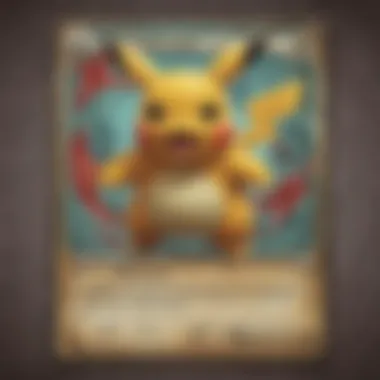
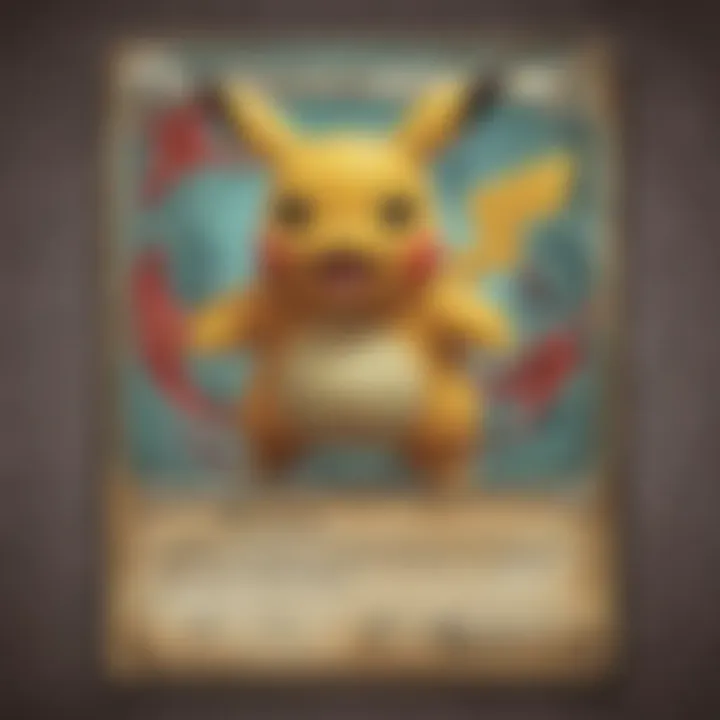
Setting a budget is paramount for any collector, ensuring that you remain financially savvy while chasing those elusive cards. A collection can quickly spiral out of reach if left unchecked. Therefore, determining how much to spend beforehand offers a framework for your discoveries.
Consider the following points when establishing your budget:
- Research Prices: Familiarize yourself with the typical price ranges for various cards. Websites like eBay and specialized marketplaces often showcase past auction results, giving you a glance at what to expect.
- Prioritize Cards: Identify which cards are essential for your collection. Are you hunting for a specific Pikachu card, or does a broader collection of series catch your eye? This can help refine spending.
- Allocate for Fees: Don't forget to factor in potential shipping costs, taxes, or fees associated with buying from certain platforms. Unexpected expenses can throw a wrench in your plans.
- Consider Future Purchases: If you find a steal today, is there still room in your budget for another card next month? Managing your spending leaves space for serendipitous finds later.
Ultimately, sticking to a budget isn’t just a strategy; it’s a commitment to responsible collecting.
Timing Purchases Wisely
Timing is key in any market, and vintage Pokémon cards are no exception. Understanding when to make a purchase can significantly influence the cost and availability of the cards you desire.
Consider these timing-related strategies:
- Seasonal Trends: Collecting can fluctuate with seasons or events. For example, after a Pokémon tournament or major release, players may offload cards to make way for new ones. This can lead to a buyer's market.
- Monitor Sales and Auctions: Keep an eye on major auction sites or platforms like Facebook Marketplace and Reddit for deals. Sellers sometimes post cards at lower prices when they're looking for a quick sale, especially during special events or holidays.
- Utilize Alerts: Many online marketplaces allow you to set alerts for specific cards. This way, you’re immediately notified when a card you want becomes available, allowing you to act swiftly.
- Review Market Conditions: Just like stocks, Pokémon card prices can fluctuate. Keeping up with trends through forums, blogs, or collector groups can provide insight into when might be a good time to buy or when to hold back.
Planning your purchases with these timing strategies can help you snag your dream cards without breaking the bank.
"Knowledge is the key; timing is the door. When both align, treasures await."
With a clear budget and a sharp eye on timing, collectors can forge ahead confidently, maximizing their investments and enriching their collections.
Post-Purchase Considerations
After the thrill of acquiring vintage Pokémon cards, the journey doesn't simply conclude. In fact, this stage can be just as critical as the collection process itself. Understanding how to care for and protect your investments can mean the difference between a card holding its value or degrading into something far less desirable. This section will delve into two core post-purchase considerations: proper storage and care, as well as insurance options tailored for collectors.
Storage and Care of Cards
Proper storage of Pokémon cards is paramount to maintaining their condition and value. These cards are susceptible to damage from sunlight, moisture, and even oils from fingers. To ensure your collection stands the test of time, consider the following:
- Use Protective Sleeves: Investing in high-quality sleeves can provide that first line of defense. Look for archival-grade plastic that is free from PVC and other harmful materials. Soft sleeves are great for basic protection, but for high-value cards, consider hard cases to keep them safe from bends and creases.
- Keep Away from Light: Excessive exposure to light can cause fading. Store your cards in a dark, dry place. Consider a box or drawer specifically meant for card storage, perhaps one that features UV shielding.
- Maintain Humidity Control: Cards thrive in stable environments. Keeping them in a cool, dry location with humidity levels between 40%-50% is ideal. Investing in a hygrometer can help monitor those levels.
"The preservation of your cards is just as vital as their acquisition; treat each card like a precious artifact, worthy of protection."
- Organize Thoughtfully: Categorize your cards in a manner that you can easily access them but still keeps them secure. Some prefer binders with sleeves for viewing, while others choose boxes for stacked storage.
By adhering to these guidelines, Pokémon collectors can find peace of mind knowing their investments are well-protected and care will allow them to enjoy their collection for years to come.
Insurance Options for Collectors
As the value of vintage Pokémon cards continues to rise, it might be prudent to look into specialized insurance for high-value collections. Here are some things to think about:
- Collector's Insurance Policies: Many insurance companies offer policies specifically designed for collectibles. Unlike standard homeowner’s insurance, these policies often provide coverage against theft, loss, and damage specifically for collectible items.
- Valuation and Appraisal: Having a clear understanding of your collection's worth is crucial. Some insurers might require a formal appraisal, especially for high-value cards. Regular updating of your collection's valuation aligns with market shifts,
- Documentation: Keep precise documentation of your collection. This includes photographs of each card, their current appraised value, and any proof of purchase. In case of a claim, this will greatly facilitate the process.
- Consider Additional Coverage: If your cards are displayed prominently, consider additional coverage for those items, ensuring they are included under your policy.
Collecting vintage Pokémon cards is not just a hobby; it's an investment that deserves protection. As with any valuable asset, taking precautionary steps to secure your cards post-purchase can ensure that they remain safe and gain value over time.
Community and Networking Opportunities
Building a robust network in the vintage Pokémon card scene can significantly enhance your collecting experience. Connecting with fellow enthusiasts not only offers a sense of belonging but also enriches your knowledge and awareness of the market's ever-evolving landscape. The sharing of insights, tips, and advice among collectors serves to elevate the entire community. Thus, tapping into these networks becomes a journey of growth and discovery.
Engaging with Collectors Online
The digital realm is bustling with Pokémon collectors. Platforms like Reddit’s Pokémon Trading Card community or dedicated Facebook groups offer collectors a chance to engage in discussions, share their collections, and even conduct trades. These online interactions can vary from casual conversations about favorite cards to deeper exchanges about sitting on potential goldmines.
Here are some benefits of engaging with collectors online:
- Access to Knowledge: Online forums and groups provide a wealth of information. Members often share articles, videos, and personal experiences, which can be invaluable for someone new to the collecting arena.
- Trade Opportunities: Unlike a traditional store setup, these platforms open the door to barter systems. You might find someone willing to trade their Charizard for your Misty’s Tears, helping to complete both collections.
- Market Awareness: Collecting is as much about what’s trending as it is about personal interest. Being active online allows you to catch wind of shifts in demand and value before they become apparent in local markets.
To get involved, consider joining platforms like reddit.com to dive into collector discussions or browsing events listed on facebook.com for meetups and trade shows.
Conventions and Local Events
Conventions and local events represent the heart of the Pokémon collector community. Attending can truly be a game changer, as these gatherings foster a spirit of camaraderie unmatched in the online space. Here’s what you can expect from such events:
- Networking: Meeting other collectors face-to-face allows for organic discussions. It’s easier to share experiences, learn from others, or even grab a deal right on the spot!
- Buying and Selling: Many events provide opportunities to buy and sell cards. You might come across invaluable finds that aren’t available online, making it essential to keep an eye out for such gatherings in your area.
- Workshops and Panels: Often, conventions have experts hosting discussions. These panels delve into everything from the history of Pokémon cards to current market trends, further expanding your knowledge base.
These events are often announced on social media, in Pokémon forums, or through dedicated pages on platforms like Facebook. Proactively checking local listings can keep you in-the-loop on upcoming happenings.
Engaging with other collectors enhances your connection to the hobby, making it more enjoyable and enriching. The collective wisdom and shared interests provide both camaraderie and deeper appreciation for each card you own. Always remember:
"Collecting isn’t just about the cards; it’s about the people who share your passions."
Ending
The conclusion of our exploration into vintage Pokémon card collecting sums up significant insights and considerations. Collecting these cards is not just about ownership; it’s about community, history, and personal connection to the Pokémon universe. As we reflect on the journey through various aspects of this hobby, it's evident that the future holds both challenges and exciting prospects for collectors.
The Future of Vintage Pokémon Cards
Looking forward, the realm of vintage Pokémon cards seems poised for an intriguing evolution. The market doesn't stand still; trends are constantly shifting. Recently, there’s been a swell of interest from a younger demographic that didn't experience the original releases. This influx could lead to further demand, impacting pricing and scarcity.
Moreover, technology plays a starring role. With innovations in online marketplaces and grading services, collectors have more access than ever. For instance, blockchain technology is being whispered about, potentially offering secure methods of authentication.
"Ultimately, the vintage Pokémon market likely reflects broader cultural trends. As nostalgia intermingles with modern technology, the cards once discarded may now shine with new significance."
The importance of being well-informed can’t be overstated. Staying updated on market trends, understanding the factors influencing card values, and participating in collector communities can all serve to enhance one’s collecting journey. Additionally, engaging in discussions on platforms like Reddit and Facebook can help collectors gain insights from one another about grading or the stories behind certain cards.
As collectors navigate the future, they should be prepared for possible fluctuations in the market. Whether you’re a seasoned expert or just dipping your toes in, the adventure is only just beginning. Collecting vintage Pokémon cards is not merely a transaction; it's a bridge connecting generations, and as those generations continue to share their passion, the community thrives.







